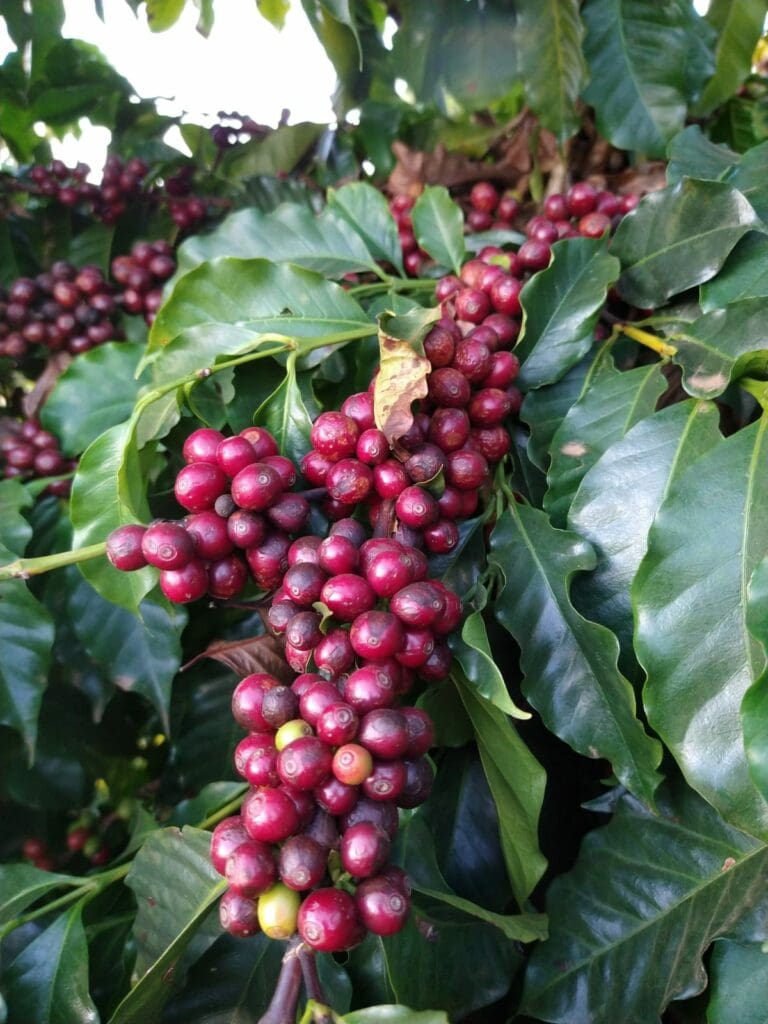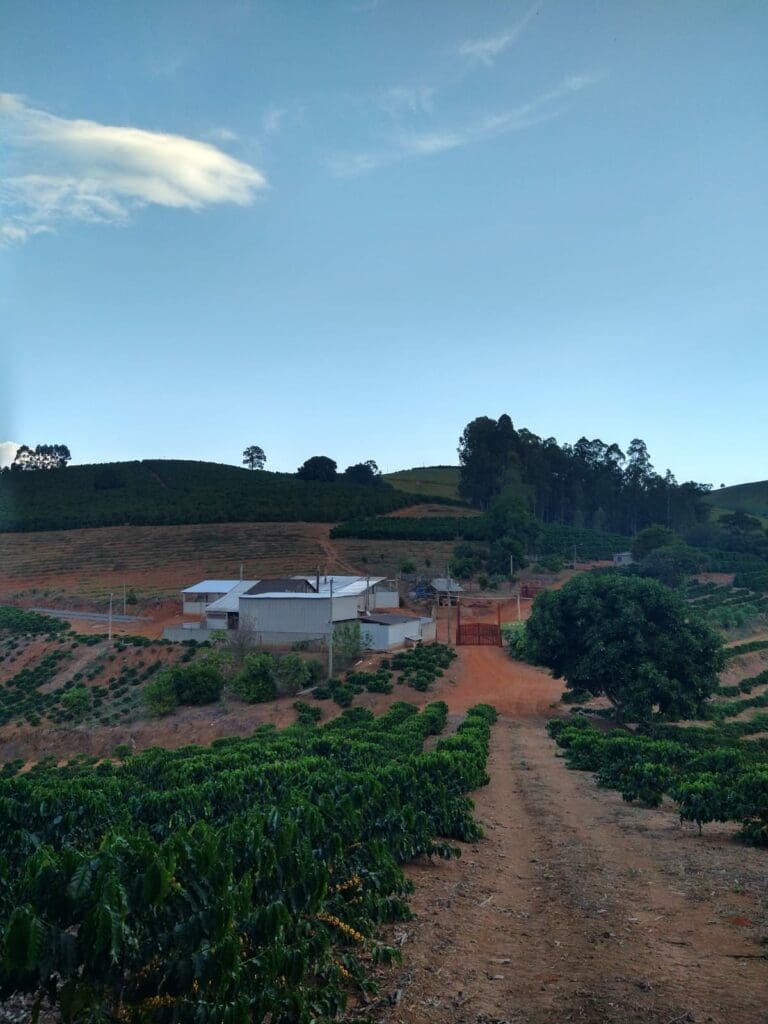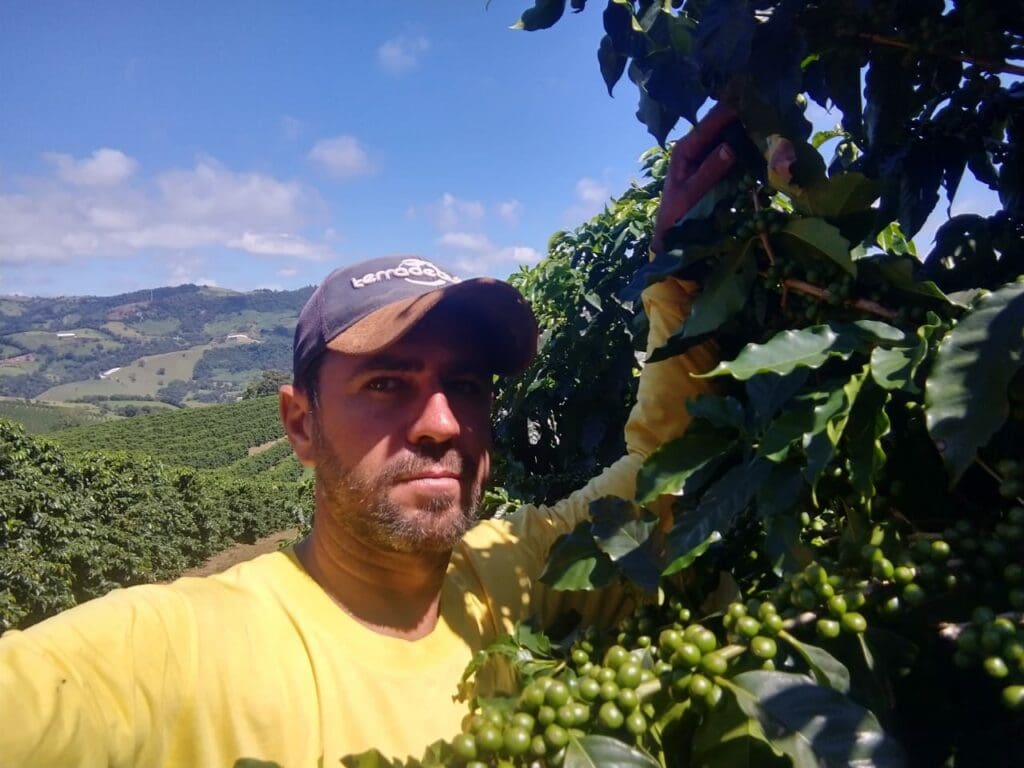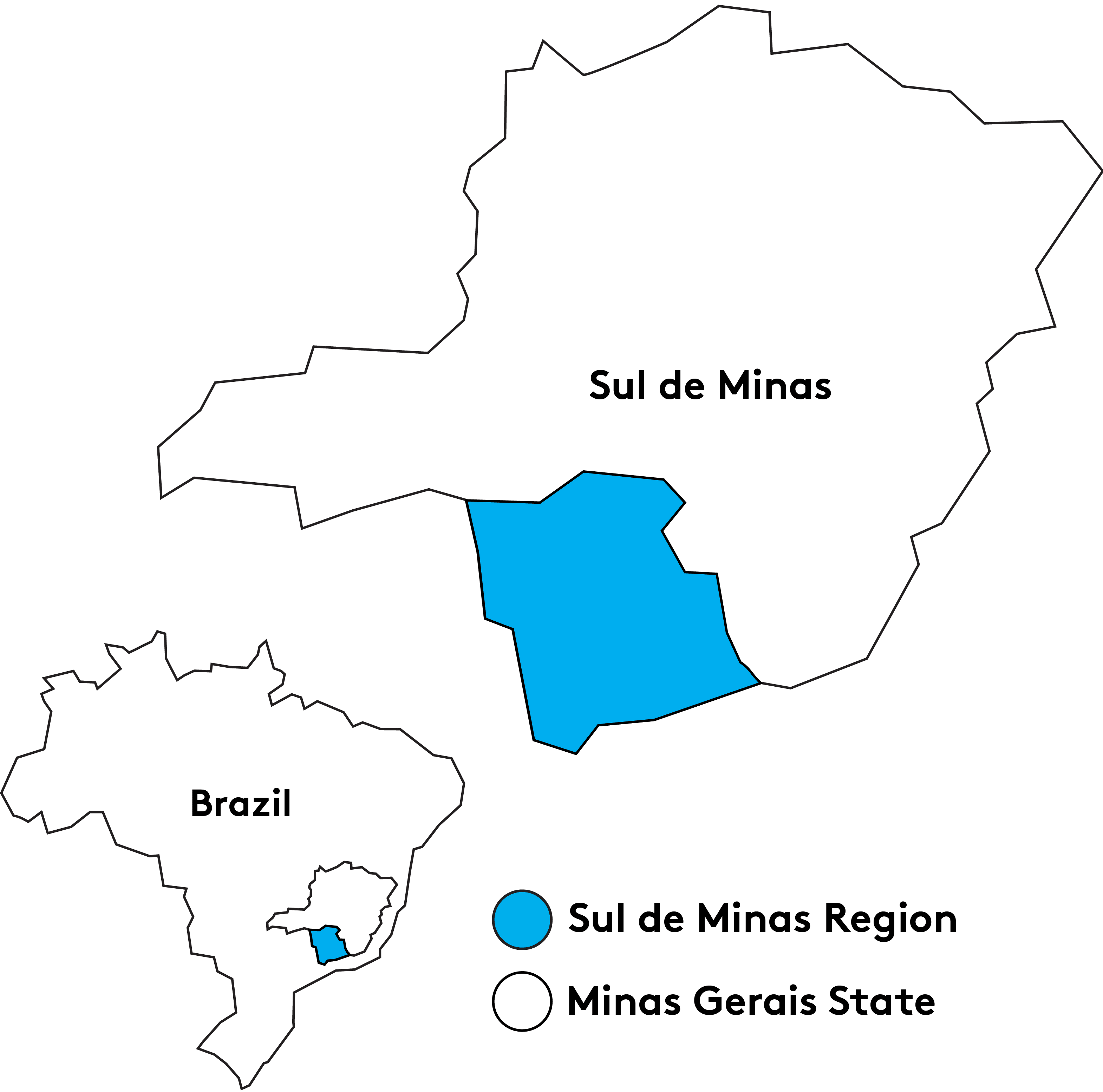Rafael Borges began growing coffee with his father, João Divanil, at their family farm Sítio Grota Bonita in the Sul de Minas region of Brazil. His father first established their coffee operation in the 1980s, and since then it has been the main source of income for the family.
Today, Rafael Borges manages the 35 hectare property. Over the years he has invested in planting new crops and building the needed infrastructure on the property for higher productivity and better quality coffees. Today, 33 hectares of Sítio Grota Bonita are planted with a wide collection of varieties. Due to Rafael and his family’s commitment to improvement and quality, they recently earned high placement in the region’s quality competition in 2019 and 2020.
This lot of Red Catuai coffee underwent Natural processing. Catuai was developed by the Instituto Agronomico (IAC) of Sao Paulo State in Campinas, Brazil by crossing Mundo Novo and Caturra varieties. Catuai coffees are cultivated widely across Brazil, and are known for their high productivity potential.





